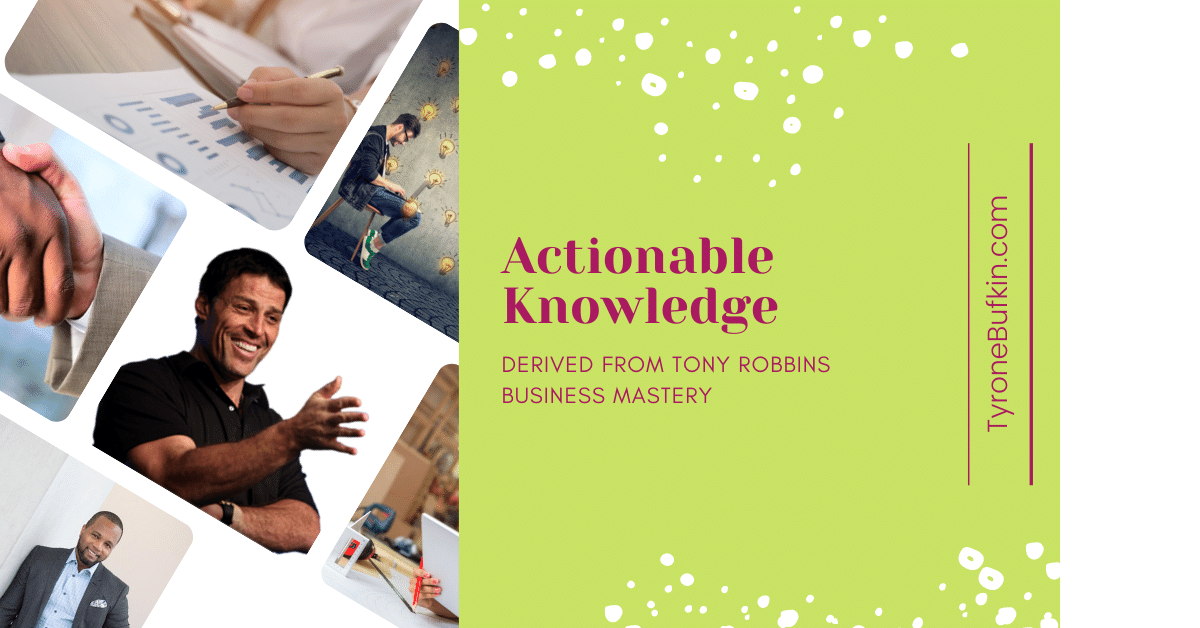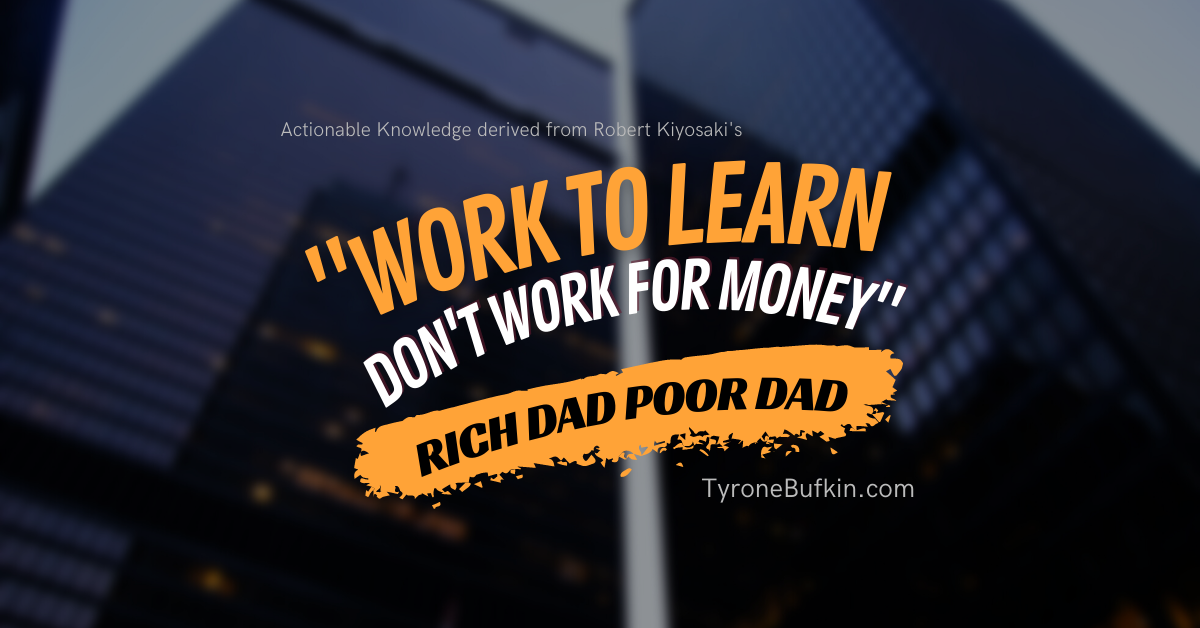THE FIDUCIARY ACTIONABLE KNOWLEDGE IN THIS POST MAY CONTAIN AFFILIATE LINKS. WE GET A COMMISSION, AT NO COST TO YOU, IF YOU DECIDE TO CLICK THROUGH CERTAIN LINKS. WE ONLY RECOMMEND PRODUCTS OR ORGANIZATIONS THAT WE BELIEVE WILL PROVIDE YOU WITH REAL RESULTS. THE INFOMATION IN THIS POST MAY HAVE BE DERIVED FROM THE SOURCES FOUND IN THE 'WORKS CITED' SECTION AT THE BOTTOM OF THE PAGE. PLEASE READ OUR DISCLOSURE PAGE FOR MORE INFO.
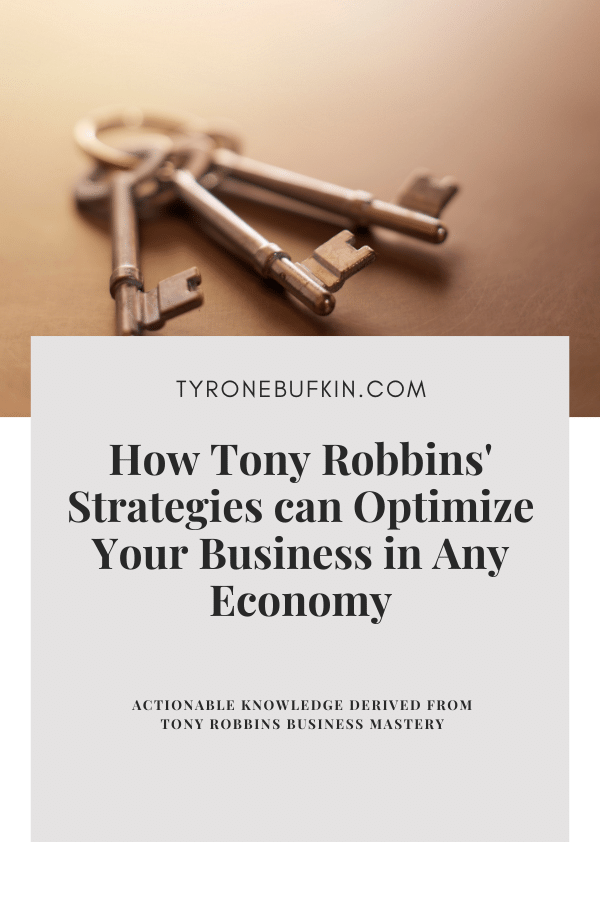
Are you struggling to find a system that would allow you to transform your ideas into measurable results in all the areas of your life that matters? I attend the Tony Robbins' Business Mastery conference to learn the culmination of over three decades of systems and strategies that dive deep into the core fundamentals upon which your company is based. I highly recommend you attend the next Business Mastery available because the total experience is the only way you will really understand but in the meantime, I have summarized the knowledge I obtained.
I know you are just as busy as I am so I've organized the information into three sections; The outcome and actions to achieve it, A condensed Session by Session summary, and finally my full summary.
Outcome: Integrate, master, & implement the 7 Forces of Business Mastery plan to consistently grow your business 30-100%

List of Action Items
- Week 1: Schedule and conduct a team meeting to review and master the identity questions; What business are we REALLY in? What business do we NEED to be in to stay competitive and dominant in our industry? Find, brainstorm, and close the gaps. Review and master the gifts of service; Who are we? What do we need? What season are we in? Walkthrough the difference between skilled artists, managers, and entrepreneurs. Come up with a plan to anticipate the challenges at each level of the lifecycle of seasons and uncover where you think you are and where you think you need to be. Review and master your compelling future. Walk everyone through each area of the 10x10x10 business map and/or come up with a more aggressive plan. Get everyone invested with rewards and schedule the next measure of performance.
- Week 2: Schedule and conduct a session to Innovate your business with new voices, questions, perspectives, passions, and experiments. Assign owners to implement these new strategies so they show up as real results in the business.
- Week 3: Brainstorm & refine with your team what your X-Factor is and implement a plan to add more value to your customers than anyone else.
- Week 4: Establish the criteria of the ideal salespeople we need to have and implement our brush-off strategy. Implement a system and make it specific to bring you only the best of the best. Design, create, implement, and constantly improve both your sales training and rewards systems. Establish the deepest needs of our clients as well as the objections that keep them from getting those benefits and the solutions that we can use to cash those objections. Train the team to a level 10 congruency in connecting presenting value and cashing objections to an Added-Value Model and an understanding of the Football Field of Communication metaphor.
- Week 5: Meet with your team and brainstorm ways to uncover how you can save between 8-12%. Educate your team as to the cost. How much revenue must be generated to gain back money spent? Review your notes and inform or invest in a CFO scoreboard. Make certain that your current business structure maximizes not only the profit but the cash you'll have at the end of the year. If you don't already have one, hire a CFO or hire a virtual CFO.
- Week 6: Meet with the team and review our Key Drivers, current numbers, and percentages, and establish targets for improvements with our team. Have the term brainstorm strategies to improve our core numbers of customers reached, presentations made, sales conversions, etc, and create your plan for making the key drivers a reality. Create your Optimization Map - your master list of commitments for what you will implement within your business to achieve your optimization targets. To grow the business geometrically, enhance the depth of this MAP by working with 100 other entrepreneurs and have them review your plan and show you ways by knowing things from their industry, that you could do to maximize growth and profitability without spending more money.
- Week 7: Implement a cultural approach of everyone focusing on how to give more than we promise. With a ratio of 3:1, 4:1 we'll create victories. Brainstorm a list of "jackpots" and "variable reinforcements" we can provide our clients by giving them unexpected surprises and bonuses and establish at what stage of the relationship we will do this. Set up acknowledgments systems for the key players in the company. Schedule a weekly meeting where stories are shared about our customers who are blown away. Share the story throughout the company. Sit down with your team and evaluate: Are we rewarding our best customers with our best benefits? If not, what should we do/ If so, how do we enhance this? Always reward your best clients by giving them benefits, discounts, offers, and values in addition to what they are already receiving.
Condensed Session by Session Summary
Business Mastery is designed for entrepreneurs ready to do the work to take their business to the next level using mindfulness, focus, effective leadership, marketing, and innovation (Introduction; The Ultimate Business Mastery System )
World-class businesses are created and continue to dominate by constant improvement in these seven areas; An effective business map, strategic innovation of products, world-class marketing, sales mastery, financial & legal analysis, optimization & maximization, and raving fan culture ( The 7 Forces of Business Mastery )
The ultimate business advantage is the consistently create and update a business map (not a plan) that will guide you from where you are now to where you want to go using the most effective route (The 7 Forces of Business Mastery; Know Where You Really Are and Create an Effective Business Map )
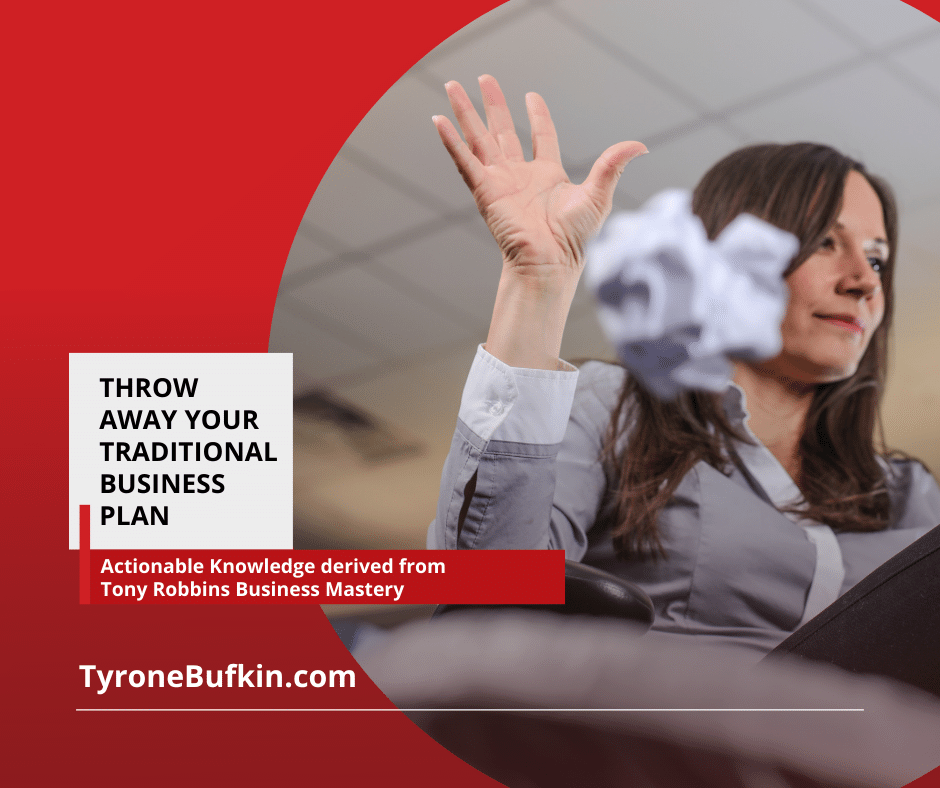
Determine what business you are really in by creating a clear business value-based outcome that is focused on transforming the quality of life for your customers and then making a profit for your personal objectives (The 7 Forces of Business Mastery; Know Where You Really Are and Create an Effective Business Map; Discipline 1: What Business Are You Really In? )
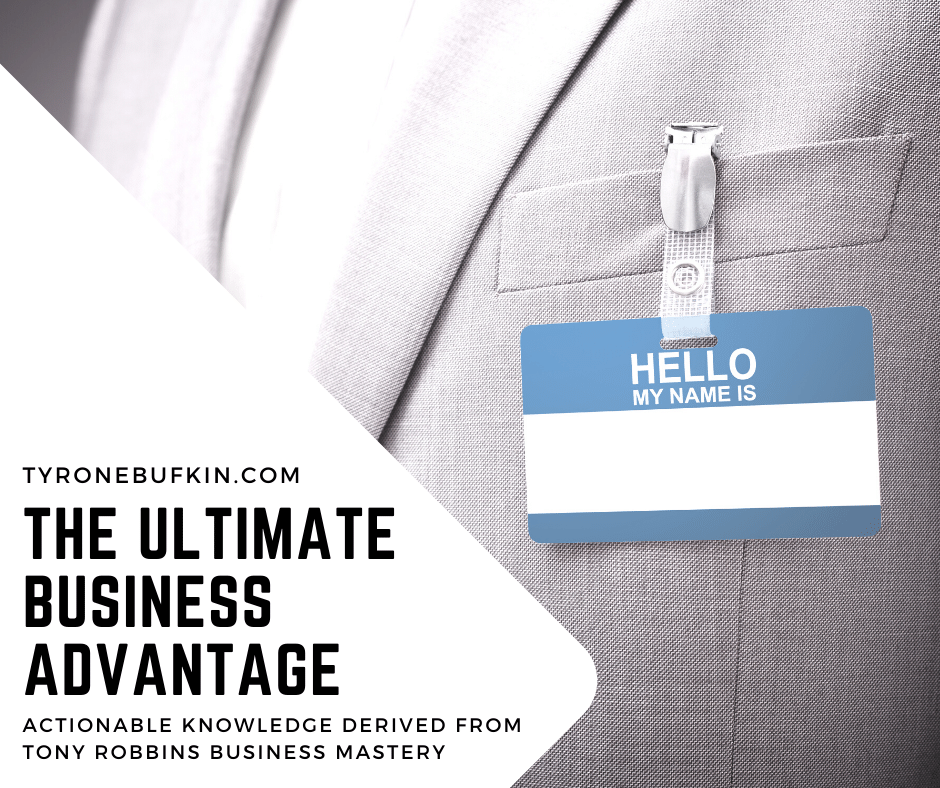
Define your ultimate vision for your business by uncovering your most current why and the reason you can preserve through the ups and downs of growing a business (The 7 Forces of Business Mastery; Know Where You Really Are and Create an Effective Business Map; Discipline 2: Defining your Ultimate Vision - What Do You Want for Your Business? )
Align with your true nature using the three gifts of service; Skilled producer, manager/leader, or entrepreneur. You are a skilled producer if you are so passionate about serving people with your talents that you would do it for free. You are a manager/leader if level-headed enough to empower a skilled producer's talents while achieving the entrepreneur's vision and financial needs. You are an entrepreneur if your primary concern is to fulfill your vision by building a system that turns your risk into success. Who are you? Which gift of service do you need? Who do you need to get rid of? Who is your current client? Who does your client need to be? what does your client need? What is your client going to need? (The 7 Forces of Business Mastery; Know Where You Really Are and Create an Effective Business Map; Discipline 3: The 3 Gifts for Service - Who Are You? )
In order to succeed in business, it is vital for you to do the right thing at the right time based on the ten stages of the life cycle of a business from birth to death. The most important stage you want to get to (and stay in) is the zone of maximization and maturity wherein you have built a business with self-sustaining systems and organization (The 7 Forces of Business Mastery; Know Where You Really Are and Create an Effective Business Map; Discipline 4: Knowing the Road Ahead - What Season Are You In? )
A growth plan. A reward system. 12-month projection (The 7 Forces of Business Mastery; Know Where You Really Are and Create an Effective Business Map; Discipline 5: Maximizing Progress or Breakthrough - What's Next? )

Maximize profits and strategic innovation with incremental additions of voices, questions, perspectives, passions, and experiments. Dominance in an industry comes from changing the company's model of the world (The 7 Forces of Business Mastery; Constant Strategic Innovation; Utilizing the Power of Strategic Innovation )
The three factors you should increase by a realistic measurement is your number of clients, the average transaction value, and the number of time the product is repurchased. Creating a compelling reason to make small increases in these three factors would exponentially grow your business (The 7 Forces of Business Mastery; Constant Strategic Innovation; Jay Abraham's 3 Ways to Grow a Business ).
The X Factor, the secret to unstoppable success, is the leader's ability to maximize their combination of resources such as skills, psychology, and experience in a way that gets the outcome of constantly improving the quality of life and experience for their customer both internally and externally (The 7 Forces of Business Mastery; CANI of World-Class Marketing and Product Promises ).
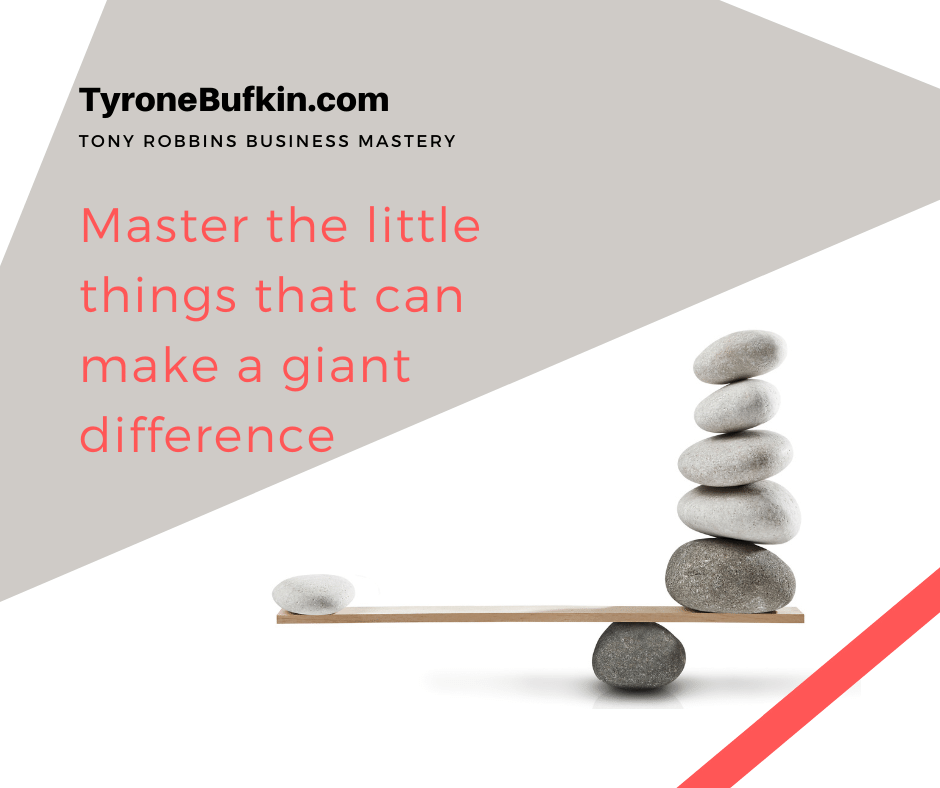
The steps to effective communication are identification, logic & reason, attack & confess, solution, and ask for the action. Get your audience to identify with your message, received enough facts to justify an emotional decision, anticipate possible objections, know all the benefits should that take action, consequences if they don't, and the opportunity to take action (The 7 Forces of Business Mastery; CANI of Sales Mastery Systems; The Direction of Influence; The Football Field Communication Model ).

Your strategic influence, created by your unique identity, will give your audience every reason to buy if you truly live it (The 7 Forces of Business Mastery; CANI of Sales Mastery Systems; Influence & Identity).

The financial and legal analysis allows you to measure where your business is, where it's going, and the ability to see blind spots by anticipating adjustments to your financials, measuring your costs, and employing legal expertise to help protect & grow your profits (The 7 Forces of Business Mastery; Constant Anticipation - The Power of Financial & Legal Analysis)
Sometimes the biggest growth opportunities come from maximizing the existing key profit drivers of the business by breaking through limiting beliefs answering one question; Is this true? The five stages to find and expand your key profit drivers are getting more leads, increase the effectiveness of your sales process, getting more clients, getting more money, and following up (The 7 Forces of Business Mastery; Constant Optimization and Maximization )
The biggest mistake most organizations make is they fall in love with their product rather than serving, loving, and understanding their clients. Raving fans are created when you understand, anticipate, and consistently fulfill their deepest needs (The 7 Forces of Business Mastery; Constantly Create Raving Fan Customers and Culture )

It is important that you communicate with passion and sincerity your appreciation, your excitement, and your resolve to go to the next level. Remember, there is a difference between being a 'speaker' and a person who communicates and influences. People will hear your emotion and your sincerity more than they will hear your words ( Integration: Setting Yourself Up For Success ).
Spend at least a couple of hours each week working ON the business instead of working IN the business. Rotate focus on the seven forces of business mastery each week (Integration: Setting Yourself Up For Success; 7 X 7 Plan ).
Change happens the moment you make a real decision, and attending Business Mastery helped me figure out the chokehold on my business; me. Simply knowing that allowed me to map out a business that had a real non-selfish mission and purpose with manageable progress. I was also able to clearly define my role as a manager/leader and leverage effective skilled producers and entrepreneurs to innovate at each stage and area of my business.

This summary, from one person's perspective, can only be of limited value to you. I strongly encourage you to attend the event personally. Reading one man's limited opinion on such an incredible experience will not be enough. Honestly, I don't think I even absorbed half of the information I hear and am planning plans to attend at least a few more times. For additional and more detailed information on Tony Robbins' Business Mastery continue reading below.
Introduction; The Ultimate Business Mastery System
"It's not the strongest of the species that survive, nor the most intelligent, but the ones most responsive to change." - Charles Darwin.
"Breakthrough is that moment when frustration, struggling, fear, worry, or anxiety disappears. It's a moment of insight, recognition about who you are, and the realization that you are more than the moment. It's a radical, massive improvement in the quality of your life, and as a result, all those you have the privilege to touch." -Tony Robbins
"In the perspective of every person lies a lens through which we may better understand ourselves." -Ellen J. Langer
"Business has only two functions; marketing and innovation." -Peter Drucker
Business Mastery is designed for entrepreneurs ready to take their business to the next level by creating a system and business & personal breakthroughs. A breakthrough is a moment in time when something happens such as a decision, an insight, a truth, an understanding, or an experience and life is never the same again. To get to the next level you will need to take little systematic actions that will make a big difference in your business and shift your personal beliefs, perception, and standards to create greater performance, results, and fulfillment.
You have the ability to transform problems into opportunities using the power of mindfulness and focus, instead of operating on autopilot and in reaction to the world. It requires you to give a detailed level of attention to solve personal and business problems.
Effective leaders maximize resources by spending less than 5% of their time on the problem and 95% of their time on the solution understanding that the goal is not to eliminate problems. The lack of resources is never the problem, it's always a question of resourcefulness. The core of all business is marketing and innovation. Any strategy you use to get your consistently improving product out requires you to see things as they are, create a vision of things better than they are, and make them the way you envision.
It is important to realize that you cannot completely separate your personal and business problems. Bad personal habits will inevitably affect your business and of course, your business affects your personal life. It is vital for your success to consistently work on yourself as well as your business with urgency. Take responsibility for everything in your life & business; if it is your fault then you can fix it. You must believe the solution exists, you will find it, and it is worth it. On day one of the Business Mastery, I was so excited but afraid this would be one of those events where the only goal is the pump you up. I was indeed hyped up but I also received incredible information within the first couple of hours. I have always believed breakthroughs just happen to you and it takes time to make a change but in fact, you can be in control of when you get a breakthrough. Also, change happens the moment you make a real decision.
The 7 Forces of Business Mastery
- Know where you really are and create an effective business map by asking yourself the following questions.
- What business are you really in? How's business? Identify the gaps between where you are and where you want to be.
- Why did you get in this business originally; why are you in it now? What do you need to get from this business long-term?
"You have to be here because you have a mission, a vision bigger than yourself, something you want to outlast you. That's the only thing that keeps you going during the dark nights of the soul when it feels like nothing is working and you have given it everything. It's what makes you work so hard when there's nothing left inside you and it's what makes you find something more. It's a place for gladiators not for dabbling wannabes." -Tony Robbins
- Who are you and who do you need? What is your true talent: (Artist/Skilled Producer, Leader/Manager, or Entrepreneur?)
- Where are you? In the economy, industry, your company, yourself and your core team, and the season of change? How do you need to prepare for the next season?
- What's next? Create a compelling future by taking stock and creating your 30-300% growth plan and reward system.
2. Constant strategic innovation of the products, service & delivery by adding more value to fulfill your customer's needs and wants.
3. Constant and never-ending improvement of world-class marketing & product promises
- X factor
4. Constant and never-ending improvement of sales mastery systems
- An effective process that creates geometric growth through referrals.
- An effective presentation that meets needs, cashes objections (doesn't attack the person, rather attacks the problem in advance through pre frames), and makes the customer thrilled with the process.
- Recruit the right people, train them effectively, re-train, and test.
- Inspire, reward, and punish them
- Create game plans at daily and weekly measurements.
5. Constant anticipation: The power of financial and legal analysis
- "To fly the plane you must be able to read all instruments, including in foggy winters."
- Anticipate legal challenges or you could lose years' worth of work and profits in a few cases.
6. Constant optimization and maximization
- The key drivers, a system for measurement, the value chain, RPM, business process, people optimization
7. Constantly create raving fans and culture is the victory zone.
- Always find a way to exceed your customers' expectations or desires. Give them more than what they ask for; give them what they truly need, and as a result, convert your customers into your most powerful sales tools through word of mouth and referrals.
The 7 Forces of Business Mastery; Know Where You Really Are and Create an Effective Business Map
"The only true competitive advantage in today's changing market and economy is not having a business plan, but having a business map that can take you from where you are to where you want to be." -Tony Robbins
The ultimate business advantage is to create a map, not a plan. Things change so fast that by the time you've created your business plan, you have to start all over again. Instead, an updated map would guide you from where you are to where you want to go using the most effective route and detouring around obstacles.
The five questions of business mastery
- What business are you really in? How is business? Identify the gap between where you are now and where you want to be. What does your business need now to grow? What business do you need to be in to have an extreme competitive advantage?
- Why did you get into this business originally? why are you in it now? What do you need to get from this business long-term?
- Who are you? Who do you need to bring on? Who do you need to get rid of? Who is your current client? Who does your client need to be? What does your client need? What is your client going to need?
- Where are you? In the economy? In the industry? In your company? In yourself and the core team? In the seasons of change? How do you need to prepare for the next season?
- What's next? Create a compelling future by taking stock, creating a 30-300% growth plan, reward system, and what you will achieve in the next 12 months.
For those of you who have created traditional business plans before, you probably already know that it is obsolete quickly. For this reason, they are usually created to get funded and then never used again. In fact, your business today is probably completely different than the business on your business plan. So while you may still have to create a traditional business plan for a specific investor, you should be using a business map to build your business.
Once I understood the difference between a map and a plan my life and business were never the same again. I used to make these perfect plans to succeed at something and of course, they would never work out. I didn't see that during the time it took me to create the plan, the plan became outdated before I even started. Conversely, create a map to success not only allowed me to get started faster but help me realize that if I hit an obstacle all I would need to do is that a detour and continue towards the goal.
The 7 Forces of Business Mastery; Know Where You Really Are and Create an Effective Business Map; Discipline 1: What Business Are You Really In?
- What is the outcome of a business enterprise? Most people get caught up in the vehicle instead of the outcome.
- What is the purpose of the enterprise? To transform the quality of life for your customer and engender a value system. You must serve your clients in a totally unique and special way and consistently give them what they want and need. You will not be in business long-term if you make a profit but fail to meet the customer's needs.
- What makes a business grow? Consistently adding more value than anyone else is adding in the market. The secret is that you must fall in love with your customer, not your products.
- What is the difference between a job and a business? If your business is organized to meet your needs but not the needs of your customers, you ultimately have a job and not a business. You must differentiate between the purpose of the business and your own personal objectives. You must have an effective exit strategy.
You have an organization anytime it takes more than one person to accomplish something. An organization is a living, breathing organism that has a life cycle and responds to the forces of nature.
It is very easy to fall in love with your product or service. If you are anything like me, you have to be thinking and dreaming about it for years before actually doing it. Then after all the long hours and hard work of creating the product it feels like it is part of your family. Finally, you present it to the customer and they have the nerve to tell you that they want to change your baby. Not all customers are right but if enough of them want something different than what you created, you will eventually go out of business. The trick is to bring the customer into the development process as early as possible. In this case, you will be interacting with your customers throughout the process but more importantly, you will care more about them than the product.
This mindset adjustment changed the management and operations of all of my business drastically. I realized that even though the business financially supports me, it is not about me. The bigger the company gets the more people (customers) we get to love and help. As their needs change then so will our products.
The 7 Forces of Business Mastery; Know Where You Really Are and Create an Effective Business Map; Discipline 2: Defining your Ultimate Vision - What Do You Want for Your Business?
"Dream lofty dreams, and as you dream so shall you become. Your vision is the promise of what you shall one day be; your ideal is the prophecy of what you shall at last unveil." - James Allen
- Why did you get into this business originally?
- Why are you in it now?
- What do you need to get from this business long-term?
What makes a business work and gives it the fuel to persevere is the why. Any business can work as long as the people behind it have passion, intensity, and flexibility. May times, why you got into the business is not why you're in it today. It takes a lot of energy to make a business successful and that energy will drain you physically and emotionally. Serving more than yourself will give you the energy to keep going after your body and emotions are gone.
Periodically you should rediscover why you are in your business and what you need to get from it long-term. In the beginning, this question will have an easy answer but as your business grows your why will get more complex and refined. Knowing the why, is advice I have received from every business mentor and guru I have ever listened to. However, I had never considered that my why could change. After re-examining my new why the hard decisions in my company became easier to make.
The 7 Forces of Business Mastery; Know Where You Really Are and Create an Effective Business Map; Discipline 3: The 3 Gifts for Service - Who Are You?
Who are you? are you a skilled producer, manager/leader, or entrepreneur? a skilled producer has extraordinary talent and consistently meets the needs of the community they serve in a sustainable way. A manager/leader consistently manages and meets the needs of the skilled producer so they can consistently meet the needs of the community in a sustainable way. Effective leaders have management skills, but managers don't necessarily have leadership skills. You have to cultivate or find leaders. Entrepreneurs are the creators and keepers of a vision. They attract and effectively engage the manager/leaders. They have an enormous risk tolerance to be able to personally weather the economic and emotional ups and downs of the business and are willing to take significant personal risks. Entrepreneurs work with managers/leaders to create and build a system that consistently empowers skilled producers to meet the needs of the community they serve in a sustainable way.
You can have all three gifts of service but you can not effectively produce results do all three by yourself. Especially trying to be a skilled producer and an entrepreneur at the same time. How can you be willing to do something for free and manage the personal risk you must take on? This doesn't mean you have to have multiple equity partners but you should have key people who take responsibility for each gift of service for your business. My skill set allows me to be a successful manager/leader but at times I am an effectively skilled producer and other times I am an adequate entrepreneur. Before becoming a key partner in a business, I always determine who I will be for this business and I make sure I enforce my position. For example, if I am the investor then I can't allow the skilled producer to do things that do not produce a financial return. However most of my businesses, it is my responsibility to empower the skilled producer to focus on profitable projects.
The 7 Forces of Business Mastery; Know Where You Really Are and Create an Effective Business Map; Discipline 4: Knowing the Road Ahead - What Season Are You In?
"That which can be foreseen can be prevented." -Charles H. Mayo
"Problems cannot be solved by the same level of thinking that created them." -Albert Einstein
In order to succeed, it is vital to do the right thing at the right time, especially in business. If you are in business, you have problems. The secret is identifying the most important problems that need to be solved. The three types of problems are normal, abnormal, and pathological.
Normal problems are those you can expect wit deal with during each stage of growth. Abnormal problems are problems that continuously reappear in a new form and can trap your business in a particular stage of growth. Pathological problems are chronic problems that have dire consequences that threaten the survival of an organization. Each of the ten stages of the life cycle of a business requires a fundamental shift in focus in five areas; goals, management style & structure, growth or decline of revenues & profits, types of problems, and type of rewards.
In the first stage, birth, you have to have enough certainty to take on the significant personal risk of starting the business. Most people at this stage work to meet their own needs but to succeed you will need to think of the needs of the business as different from your own needs.
In the second stage, newborn/infant ("You, Inc"), your business has now entered a race for survival by hiring help with the workload but with no organized team and you are really running the business. Your only goal is to survive and grow. Normal problems would include not knowing the difference between revenue and profits, low cash flow & production, and no systems or accounting. Very few rewards can be offered at this stage because the owner works for free.
At the third stage, toddler ("management by crisis"), your business starts to 'walk & talk' on its own. You have begun to build your management team but you still maintain absolute control over all core decisions. Your goals are to survive, grow, and begin to build a company. Cash flow is still a concern because revenues are used as if they were profits. Normal problems include lack of cash flow, no systems. lack of accounting and others can make poor decisions and create problems. Rewards would be pride, excitement for being a part of something.
At the fourth stage, teenagers ('crisis by management'), you start to develop a professional team to manage the business but it is organized around people vs tasks. Your goals are focused on growth in revenues, sales, entrepreneurship, creativity, and product innovation. The core authority is still the owner who structures the decisions. While cash flow grows, the profits are unknown and often nonexistent. Normal problems include lack of systems, unknown risks, dangerous overconfidence, lack of accountability, and the inability to distinguish the timing of good vs bad opportunities. Rewards can now include forms of commission and bonuses.
At the fifth stage, young adult ("the re-birth"), you are beginning to anticipate the future and make more educated, committed, and selective choices. You start to focus on the systems that allow you to settle down and get serious. Your goal would include increasing profits versus revenue and cut waste. Your management team is made up of professional and experienced managers who make the decisions while running some things through the founder. You build to a better cash position. Normal problems include deciding what not to do, internal conflicts, and psychological difficulties. Rewards can now include corporate and individual benefits.
At the sixth stage, the zone of maximization and maturity ("the prime"), you begin reaping the rewards and certainty. You have developed a system that consistently meeting the needs of the community, the team, and yourself. The goal at this stage is to increase revenue and profits and bring a vision to the world at the highest level. Normal problems include unpredictable outcomes, lower intensity, mismanaged costs, bureaucratic issues, and distracting opportunities. Rewards are related specifically to the behavior needed.
At the seventh stage, mid-life evaluation ("the transition"), things begin to deteriorate and fall apart. You must decide to innovate, allow your business to die, or execute an exit strategy. Your goal is to increase creativity and meet customer's needs in new ways. Your professional team is in need of some new blood and inspiration. Sales, revenues, and profits start to drop. Normal problems include people being taken for granted, low commitment, original team leaving, and blame versus resolving. Rewards tend to shrink or focus on maintaining the status quo.
At the eight-stage, aging ("the break down"), the breakdown begins to accelerate while the key leaders are in denial about the size of the problem. The goal is focused on survival and shifting blame. An aged management team refuses to transform while both revenue and sales drop rapidly. Normal problems include breakdowns in all systems and processes among people, customers, and culture. Rewards are simply delaying the pain.
At the ninth stage, institutionalization, the organization should be dead but it kept alive on life support through subsidization or nationalization. There is little purpose left and no sense of control. The goal is to keep it alive a few more weeks, months, or years. Management is living on what was. revenue and sales continue to drop rapidly. Normal problems include every type of problem particularly loss of customers, key accounts, key people, and processes. The only reward would be bankruptcy.
Finally, at the tenth stage, death, is no longer sustainable and with no people to support it, your business unravels and dies.
Similar to the stages of life, it is important to manage expectations according to the stage you are in. For example, would you expect a newborn baby to help you pay rent? So why expect your start-up business to support you immediately. It is normal for a teenager to act unpredictably, so too would a young business. If you can manage your expectations, you can learn which problems should be solved first and which can be put off.
The first time my wife understood why my startup business was taking up so much of my time was when I explained how a business is just like a child. In the beginning, it is helpless and completely dependent on me but one day it will be able to take care of us.
The 7 Forces of Business Mastery; Know Where You Really Are and Create an Effective Business Map; Discipline 5: Maximizing Progress or Breakthrough - What's Next?
Now that you have defined where you are, what's next is to figure out how to create a compelling future using a growth plan and a reward system of what you will achieve in the next 12 months.
The 7 Forces of Business Mastery; Constant Strategic Innovation; Utilizing the Power of Strategic Innovation
Strategizing is not a once-a-year rain dance nor is it a once-a-decade consulting project. It must be a skill as deeply embedded in your organization as total quality, cycle-time reduction, or customer service. Strategic innovation is the ability to reinvent the basics of competition within existing industries and to invent entirely new industries. The five factors that would revitalize a company are new voices, new questions, new perspectives, new passions, and new experiments.
If you are stuck at a level of growth, it is most likely because you have not introduced any new and challenges to your business. Considering listening to someone who will disagree with you, question your directions, and forces you to see your business in a new light such as new employees, new partners, and prospective clients. Everything is the feedback your need to grow your business, you just have to be willing to listen. If you are looking to innovate then listen to your angry customers, customers who didn't buy in, investors who turned you down, or competitors.
The 7 Forces of Business Mastery; Constant Strategic Innovation; Jay Abraham's 3 Ways to Grow a Business
Jay Abraham's simple growth plan would increase your number of clients, your average transaction value, and the number of repurchases by a manageable percentage. For example, if you currently have 10 clients who on average paid $100 each month for your product you would be earning $12,000 in annual revenue.
"Reasons come first, answers come second".
"If you're attacking your market from multiple positions and your competition isn't, you have all the advantage and it will show up in your increased success and income." -Jay Abraham
If you were to increase each category by 10 percent, then you would have 11 clients paying $110 every three weeks or so for annual revenue of $15,972. That would be an increase of almost $4,000! Imagine if you increased your clients, A.T.V., or repurchase by 20%?; or 30%? If your product is a one-time sale, you may want to instead count the number of referrals you get and convert to sales or consider adding an ongoing service to sell that can increase your frequency. For more information, check out "The Only 3 Ways to Grow A Business" by Jay Abraham.
Now that you're crystal clear on your targeted numbers achieving them will require strong enough reasons to follow through in good times and tough times. Create compelling reasons and extraordinary benefits that you will experience by making this geometric growth happen in your business.
You have believed that growing your business seems impossible. I mean how could you just go find 100 new clients this month. However, slowly increasing these three factors is not only simple and realistic but truly grows your revenue. I've used this growth plan methodology several times over multiple different companies and it has been a true game-changer. It helps me manage growth expectations and get so excited that so much growth is possible with such a small increase.
The 7 Forces of Business Mastery; CANI of World-Class Marketing and Product Promises
"The aim of marketing is to know and understand the customer so well the product or service fits him and sells itself." -Peter Drucker.
"Innovation is the specific instrument of entrepreneurship. The act that endows resources with a new capacity to create wealth." -Peter Drucker
The secret to unstoppable success is in mastering the little things that can make a giant difference. The X Factor in business is the ability to find a way to add intangible value that goes beyond what anybody can really measure. It's the ability to find a way to do more for your customers than absolutely anybody else and to consistently maintain that standard.
An X Factor can be expressed in a number of different ways. At its core, it is a form of leadership and a way of thinking about who you are and what you bring to the marketplace.
Wherever you are weak, you will need to find ways to get strong through education, experience, or bring others who are strong. If you are the leader you may not be able to do it all but you've got to be able to lead it all. Defining what and how you can continually add extraordinary value to your customers will keep you ahead of the game.
Many of your competitors will be marketing the strength of their product instead of their X-Factor. At the end of the day, the customer will look for the real reasons to purchase a similar product by which the company is quickly and concisely affirm what makes the company and the product different and better than anyone else. For my early companies, discovering our X-Factor was extremely difficult and we were often wrong. What helped us finally figure it out was asking and listening to our paying clients. Once we asked them about what made them choose us over our competitors and what makes them continue to purchase for us, we began to understand that which set us apart; we are able to start advertising with that and grew our closing ratios dramatically.
The 7 Forces of Business Mastery; CANI of Sales Mastery Systems; The Direction of Influence; The Football Field Communication Model
The direction of influence provides the outcomes, structure, and sequence for quality communication. Think of all communications as starting at the zero-yard line on the football field with the goal of the person with whom you are communicating ultimately taking action as the touchdown.
"Adversity causes some men to break; others to break records." -William Ward
"To effectively communicate, we must realize that we are all different in the way we perceive the world and use this understanding as a guide to our communication with others." -Tony Robbins
With this in mind each step of the communication process has some yardage associated with it; the first 40 yards (identification), next 10 (Logic and Reason), next 25 (attack & confess), next 24 (Solution), and the final inches (ask for the action).
The first step, Identification, is the most important part of any quality communication. The outcome for creating identification is to get your audience to identify and relate to you and your message upfront; they should be thinking "me too" and "yes" instead of "so what". The second step, Logic & Reason, means giving your audience just enough facts and details to justify an emotional decision. People make decisions for emotional reasons, but they always need to be able to justify them with logic. In this stage, you are giving them the logic they need in order to create this justification, certainty, and credibility. In the third step, Attack & Confess, you will anticipate and articulate the possible objections your audience could have then claim you had the same objection and attack yourself for it. Show them the consequences if they don't follow through by relating to them. At the fourth step, Solution, you want to give your audience the solution to the challenges you have already laid out. You want them to know all the benefits if they take action ("Heaven if I do") and all the negative consequences if they don't follow through ("Hell if I don't"). The tempo should be picked up at this point so that you have momentum going into the final step. In the fifth step, Ask for The Action, you need to ask them for a specific commitment. At this point, your audience should be sold, however, you don't want to take anything for granted.
The strength of your business is completely dependent on your ability to communicate; not just with your potential customers but current customers, employees, vendors, partners, and anyone else vital to the operation of your business. You should always be looking to improve your communication process and results. My philosophy has always been to over-communicate and is transparent. It lets everyone know my intentions and they can correctly judge whether or not they want to be connected to me. This method has scared people off quickly but I believe that they were going to leave me sooner or later and I would rather sooner than later. The people who remain in my circle of influence, trust me because I'm honest.
The 7 Forces of Business Mastery; CANI of Sales Mastery Systems; Influence & Identity
Create a unique identity and consistently live it using strategic influence to influence people before they even meet you, your product/service, or your situation. Our evaluations are shaped and filtered through our current beliefs about the character and quality of any product or individual. A powerful and unique identity that your truly live and the market is the ultimate competitive advantage proving the value you add, unique point of view, and gives them the reasons to buy it and love it.
How many times have someone tried to sell you something and you just knew they are just doing it to make a dollar. I'd bet that even if you were interested in what they were selling, it made you hesitate to buy from them. People can tell when they see authenticity and it is the best tool for making the sale. At the earlier stages of my business, it was the hardest thing to create and be true to my company's identity. Every small business needs money and will attract people who are willing to pay you to betray your identity. Of course, if you do, it alters the expectations of prospective clients. No matter how much you need the money it is always better to stay true to your identity.
The 7 Forces of Business Mastery; Constant Anticipation - The Power of Financial & Legal Analysis
Financial and legal analysis will allow you to measure where your business is, where's it's going, and the ability to see the blind spots that could get you into trouble. It requires constant attention to know where your company is spending its money, anticipates any potential lawsuits, and properly protects proprietary assets.
"Business, more than any other occupation, is a continual dealing with the future; it is a continual calculation, an instinctive exercise in foresight." -Henry Luce
"To be able to fly a plane, you must be able to read all the instruments...even in foggy conditions." -Tony Robbins
"The only good is knowledge and the only evil is ignorance." -Socrates
The three key components of anticipation are your financials, costs, and legal expertise. You must consistently read, understand, and measure your financial reports, analysis, and statements making strategic adjustments as needed. Have a strategy using a system of checks and balances to manage and measure your costs, cash flow, expenses, and opportunity to maximize your income. remember, every dollar you are losing can actually be re-invested towards the growth of your business thus your costs are actually exponentially more than it initially appears. It is very advantageous to become skilled in the art of negotiation during which you have the opportunity to improve your profits. Employ quality legal expertise, at least 10 years of experience, upfront to make sure you know where potential legal challenges may show up and to vet every deal before the negotiation.
If you don't know your numbers and legal position, you will not win at any negotiation and as such will not make any profit. As a business owner, you simply need to know what the financials and legal experts are saying in order to make the best decisions for the growth of your business. Oddly enough I hated math until I learned how to read financial statements. It's not just math is a story of a company and its ability to help its target clients.
The 7 Forces of Business Mastery; Constant Optimization and Maximization
"What's talked about is a dream. What's envisioned is exciting. What's planned becomes possible. What's scheduled is real." -Tony Robbins
"Knowledge has to be improved, challenged and increased constantly, or it vanishes." -Peter Drucker
The most successful businesses are those that have a plan to continually improve and optimize the core areas of the business. Sometimes, the biggest growth opportunities don't come from new initiatives but rather from taking the core processes the business is already doing and executing them more effectively.
The only way to believe something is not to question it so the key to breaking through your limiting beliefs can be found in three questions; Is this true based on all possible information or could this be a misinterpretation, misperception? What do you feel, experience, and become like when you believe this thought? If this thought didn't exist, how would your feel, behave and experience life and what would you be like? Turn around your limiting belief by saying the opposite is true or replace 'they/he/she/you with 'I' and come up with three examples of how you know a new belief is true.
Basically, find the smallest but most effective areas to generate a small increase and you will see massive growth over time. Many entrepreneurs get lost in the big dreams and don't realize that big dreams are built on small wins.
The 7 Forces of Business Mastery; Constantly Create Raving Fan Customers and Culture
The core strategy behind supreme organizations is the ability to understand, anticipate and consistently fulfill the deepest needs of the clients. Remember, it takes most of your time, energy, and money to acquire new customers so the easiest way to make additional money is to continually serve that same customer. Your goal should be to create quality clients by moving beyond "making the sale" to always doing what is in the best interest of the client.
"You've got to add more value to your customers than anyone else does. The more you are able to add value to your customer, the more you dominate the marketplace." -Tony Robbins
"we've been asked by a lot of people how we've grown so quickly, and the answer is actually really simple...We've aligned the entire organization around one mission; to provide the best customer service possible. Internally, we call this our WOW philosophy." -Tony Hsieh, Zappos
The biggest mistake most organizations make is they fall in love with their business or product and not with their clients. Your business needs to be based on love, worship, caring, understanding, and empathy where you're constantly finding a better way to meet the client's needs. The seven strategies for creating raving fans are to give more than you promote, always leave your clients in a better place, Create unexpected surprises and bonuses for your clients, run your business in a transparent way, always reward your best clients, create a system that allows everyone in your organization to consistently meet your client's needs, and give back in whatever ways you can to your customers, the industry and society as a whole.
At first, this may seem counter-productive because if you have a business then you have a need for cash flow. Shouldn't you be focused on getting your bills paid? However, if you focus on transparently taking care of your clients, you will never have to worry about your finances. This concept wasn't foreign but was incredibly hard to uphold at first. It sounds really good until a bill collector is threatening to take one of your core assets. Over time, I have learned that in the long run this methodology really works because the more my client trust me and the more I get to know them, the more I do not want to let them down; in return, they remain loyal.
Integration: Setting Yourself Up For Success
"When things stop growing, they begin to die." -Charles Gow
The seven steps for taking business mastery home
- Associate to each individual and to all the great things that already exist within your current organization.
- Acknowledge the success that has been created so far and how they've personally contributed to that; you can only build on success.
- Help your team discover for themselves the core patterns of your business identifying what's great and what needs to change.
- Teach people the frame of reference that there is always a way to find the resources if you are resourceful enough even if in the beginning it slows things down.
- Lead by example by sharing your own mistakes and taking responsibility for where things are.
- Address anyone on your team who is not a right fit with specific coaching, follow-up, and measuring the results.
- Focus your team on the most important, specific, measurable, actionable, relevant, and timely outcomes.
To engage your team, you must be completely engaged yourself. They will not change unless you change first and for real. Only then will you be able to guide them to improve and grow to the next level.
Integration: Setting Yourself Up For Success; 7 X 7 Plan
Success is 80% psychology and only 20% skill.
While the seven forces of business mastery are always in effect, in order to geometrically grow your business you should Schedule and conduct sessions that focus on one key result as a team every week. By meeting with your team every week, you will have the most accurate understanding of your business, your team, your clients, and your progress. Additionally, every on your team will feel included and inspired to grow. Transitioning into a weekly meeting to work on the business was awkward to me and my team at first but the benefits became crystal clear to everyone very quickly. Everyone was able to work smoother and quicker with complete confidence that we were all on the same page.
Understand the key strategies to keep your business thriving in any economic environment at Business Mastery. For five days, alongside Tony Robbins and some of the best minds in business, you will delve into business growth strategies, systems, and resources that will further drive your success. Business Mastery is more than a business growth conference, the program is designed to ensure you are equipped with the knowledge and lasting growth strategies from some of the world’s best leaders. The lessons taught and insights from Business Mastery ensure you will achieve an extraordinary level of both professional and personal fulfillment.

It’s no secret that massive results come from massive action. Business Mastery strategically breaks down the innovative approaches used by industry leaders like Apple, Zappos, American Express, and Facebook to help you discover where your business is now and how you can create a map to reach your goals. By addressing the critical factors impacting your business, you can refocus and realign with the winning business strategy and psychology to compete and innovate in any economy.
Works Cited
Robbins, Anthony. "Business Mastery; Strategies and Tools to Optimize Your Business in Any Economy" August 2016, Robbins Research International, 2009. Las Vegas, NV.
